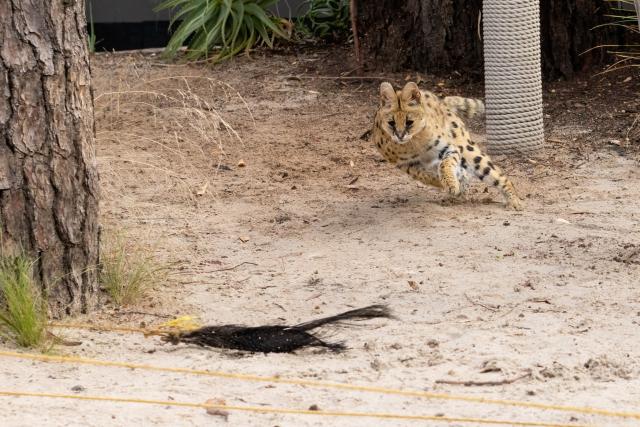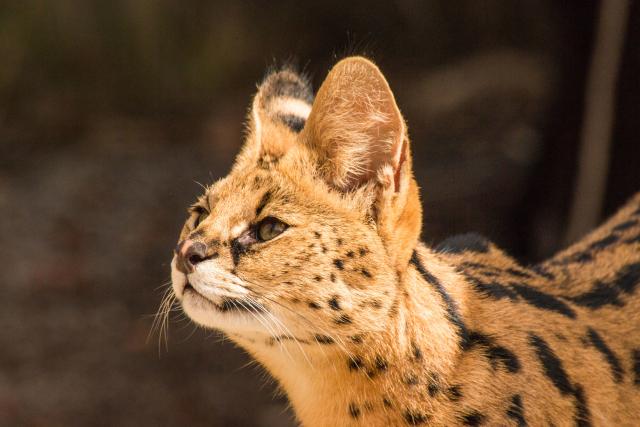Some of the world’s fastest felines are rapidly tearing through the sandy trails at Werribee Open Range Zoo, thanks to
the arrival of an interesting enrichment device.
The device, called a ‘feather lure’, is specially designed to challenge the Zoo’s two Servals, Nanki and Morili, by encouraging them to use their natural wild hunting behaviours.
Servals can impressively sprint up to 80 kilometres an hour while chasing prey in their natural environment in Africa.
So, to emulate that wild hunting experience, keepers are utilising the feather lure which rapidly retracts a rope with
feathers tied to its end, throughout the Zoo’s serval habitat.
Werribee Open Range Zoo African river trail keeper, Suzanne Szabo, said keepers strategically modify the feather
lure’s course and direction around various trees and rocks.
“Servals are a remarkable hunting cat and they’ve got a lot of different abilities,” Ms Szabo said.
“They are very agile, and can run, jump, and change direction mid-stretch. They’re also very quick and fast at taking corners, too.
“We use the feather lure sporadically and are always modifying the route of the feather lure each time to ensure we
keep the Servals constantly curious and engaged.”
As a reinforcing reward, keepers provide the Servals with tasty treats when they successfully chase down the feather
lure.
The feather lure is currently running behind the scenes, with keepers investigating opportunities to share the
experience with Zoo members and visitors in future.
Servals are native to forest, savannah, grassland, and wetland regions of Africa.
They are medium-sized, slender cats that are identified by their uniquely large ears, black-spotted coats and long legs and necks that allow them to see over tall savannah grass.
In addition to being one of the fastest animals in the world, their strong powerful legs allow them to jump an astonishing three-and-a-half metres into the air to catch prey.








